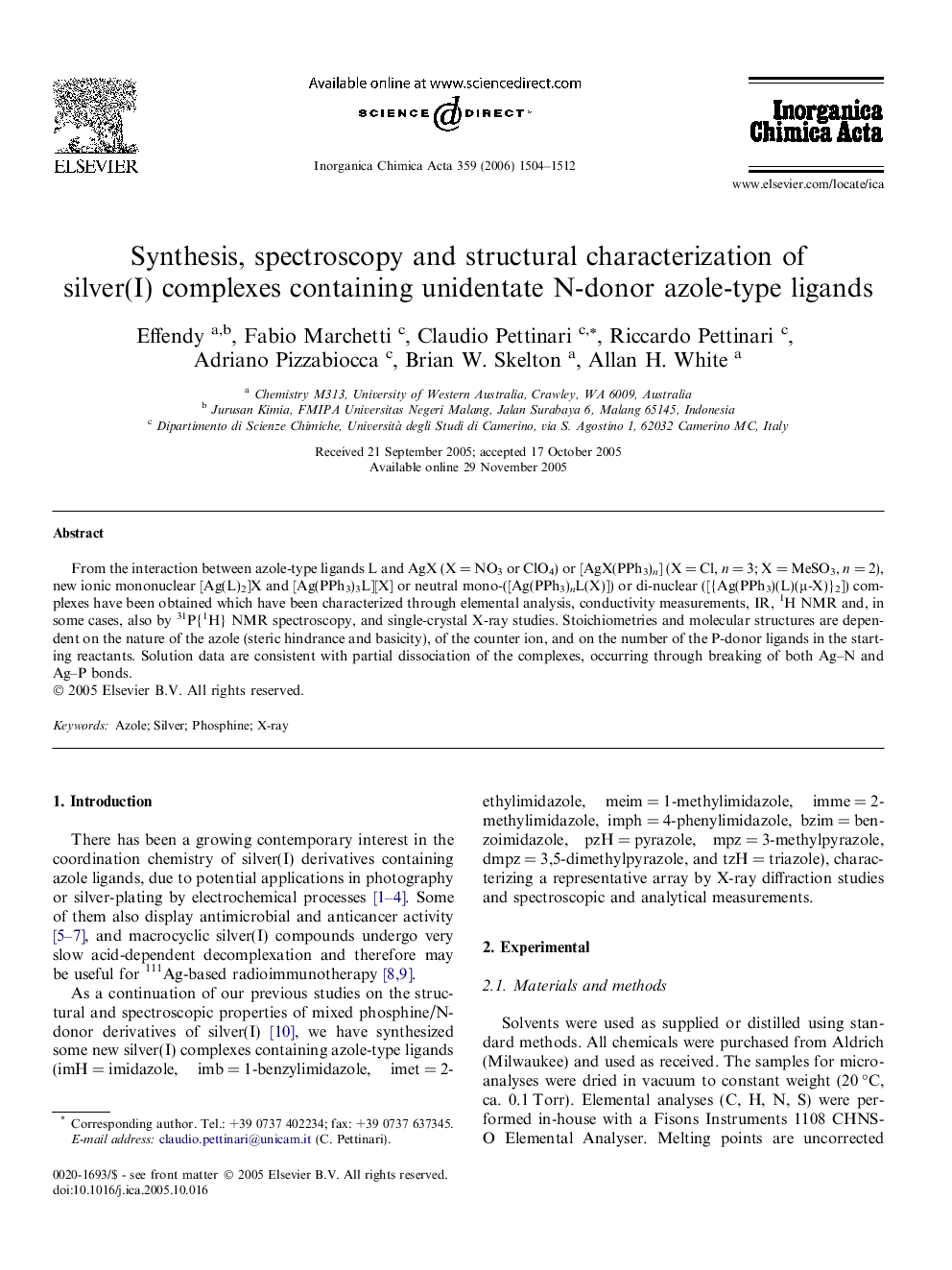| Article ID | Journal | Published Year | Pages | File Type |
|---|---|---|---|---|
| 1313087 | Inorganica Chimica Acta | 2006 | 9 Pages |
From the interaction between azole-type ligands L and AgX (X = NO3 or ClO4) or [AgX(PPh3)n] (X = Cl, n = 3; X = MeSO3, n = 2), new ionic mononuclear [Ag(L)2]X and [Ag(PPh3)3L][X] or neutral mono-([Ag(PPh3)nL(X)]) or di-nuclear ([{Ag(PPh3)(L)(μ-X)}2]) complexes have been obtained which have been characterized through elemental analysis, conductivity measurements, IR, 1H NMR and, in some cases, also by 31P{1H} NMR spectroscopy, and single-crystal X-ray studies. Stoichiometries and molecular structures are dependent on the nature of the azole (steric hindrance and basicity), of the counter ion, and on the number of the P-donor ligands in the starting reactants. Solution data are consistent with partial dissociation of the complexes, occurring through breaking of both Ag–N and Ag–P bonds.
Graphical abstractNew ionic mononuclear [Ag(L)2]X and [Ag(PPh3)3L][X] or neutral mono- ([Ag(PPh3)nL(X)]) or di-nuclear ([{Ag(PPh3)(L)(μ-X)}2]) (L = azole-type ligand) complexes have been synthesized and characterized through analytical, spectral and single-crystal X-ray studies. Stoichiometries and molecular structures depend on the nature of the azole (steric hindrance and basicity), of the counter ion, and on the number of the P-donor ligands in the starting reactants.Figure optionsDownload full-size imageDownload as PowerPoint slide
